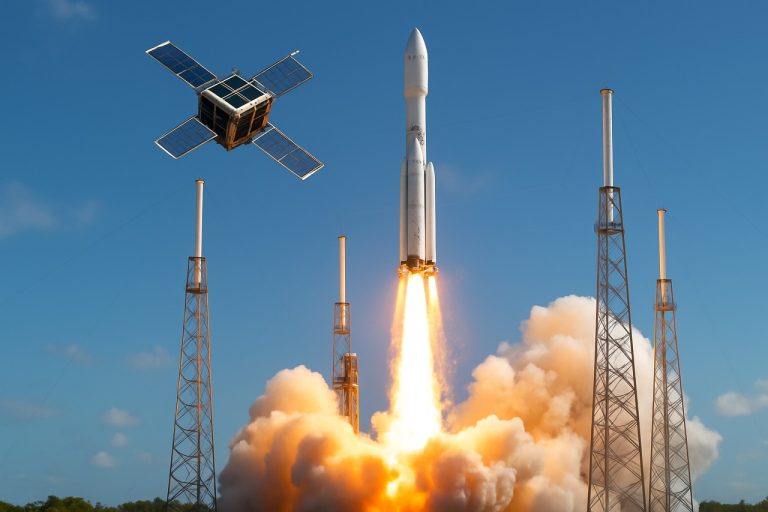
Kim Jong Un Orders Emergency Repairs as North Korea’s Botched Warship Launch Spurs Russian Involvement
Satellite imagery reveals North Korea’s damaged destroyer moved near Russia, spotlighting growing Pyongyang-Moscow military ties.
- 5,000 tons: Size of North Korea’s newest destroyer involved in the launch accident
- 7–10 days: State media estimate for repair completion at Rajin port
- May 21, 2025: Date of failed launch witnessed by Kim Jong Un
- Millions: Rounds of munitions reportedly sent from North Korea to Russia in the last year
A dramatic failure at North Korea’s Chongjin shipyard has transformed a much-hyped naval launch into an international spectacle. On May 21, North Korea’s latest 5,000-ton destroyer toppled sideways in front of Kim Jong Un himself, leaving its bow embarrassingly stuck on land and plunging the nation’s shipbuilding ambitions into crisis.
But now, in an audacious move, Pyongyang has towed its wounded warship to Rajin — a port just miles from the Russian border known for bustling secretive trade, not advanced shipbuilding. Satellite photos snapped by Maxar Technologies on Sunday have fueled fierce speculation: Is Moscow stepping in to rescue Kim’s navy?
Why Did North Korea Move Its Damaged Destroyer to Rajin?
Experts believe Rajin’s location is no accident. Though it lacks the advanced infrastructure of Chongjin, Rajin offers quick Russian access and sufficient facilities for repairs and maintenance. North Korea watcher Yu Jihoon notes that the port has become a crucial link in both economic cooperation and emerging military ties with Russia.
The Rason economic zone, which includes Rajin, has recently been implicated in arms shipments between North Korea and Russia, according to the Modern War Institute at West Point. Kim Jong Un reportedly commanded his engineers to restore the battered vessel by the June Workers’ Party plenary session — an urgent mandate meant to save face after a highly publicized failure.
Q: What Damage Did the Destroyer Sustain?
When the ship’s stern launched but the bow stuck on land, analysts say critical systems — like sonar and depth finders — may have been battered. Some officials, including South Korean defense authorities, downplayed the severity, describing the primary challenge as floodwater cleanup and electronic checks.
Yet, military analysts caution that North Korea still lacks the advanced technology to handle major repairs, especially for sensitive naval electronics. The suspicion? That Russia, or even China, may have to provide parts and technical know-how.
Is Russian Help on the Horizon?
Signs point in that direction. Over the last twelve months, evidence has mounted that North Korea shipped millions of munitions, including missiles and rockets, to Russia — likely in exchange for high-value military technology. International monitoring teams confirm Moscow’s returns include complex gear: air-defense systems, electronic warfare packages, and refined oil.
The close proximity of Rajin to the Russian border practically invites clandestine cooperation. Analysts such as Yu Jihoon suggest that Russian engineers could discreetly cross over to assist, though distinguishing individuals from hardware transfers remains tricky.
For the latest on strategic alliances, see Reuters and BBC News.
How Will the Repairs Impact North Korea’s Military Program?
Successfully reviving the destroyer would be a potent symbol for Kim’s regime, signaling resilience and Russian backing. Failure, however, would be a blow to prestige and a hurdle for North Korea’s massive investment in modernizing its navy—a key 2025 defense priority.
Rajin’s new role as a repair hub directly ties North Korean ambitions to the Kremlin’s support, peppering the East Asian balance of power with even more uncertainty.
How to Watch for North Korea–Russia Military Moves
– Track shipping patterns and satellite images of key ports via open-source intelligence.
– Monitor statements from the United Nations and multilateral sanctions teams.
– Follow updates from international news outlets like CNN and The New York Times.
Stay alert: North Korea’s rapidly evolving navy and deepening Moscow ties could reshape geopolitics in 2025 and beyond.
- Watch Rajin and the Rason economic zone for unusual activity
- Follow credible defense analysts and military monitoring teams
- Check updates from leading global news services for breaking intelligence
- Stay tuned to satellite imagery reports for visible military movements



